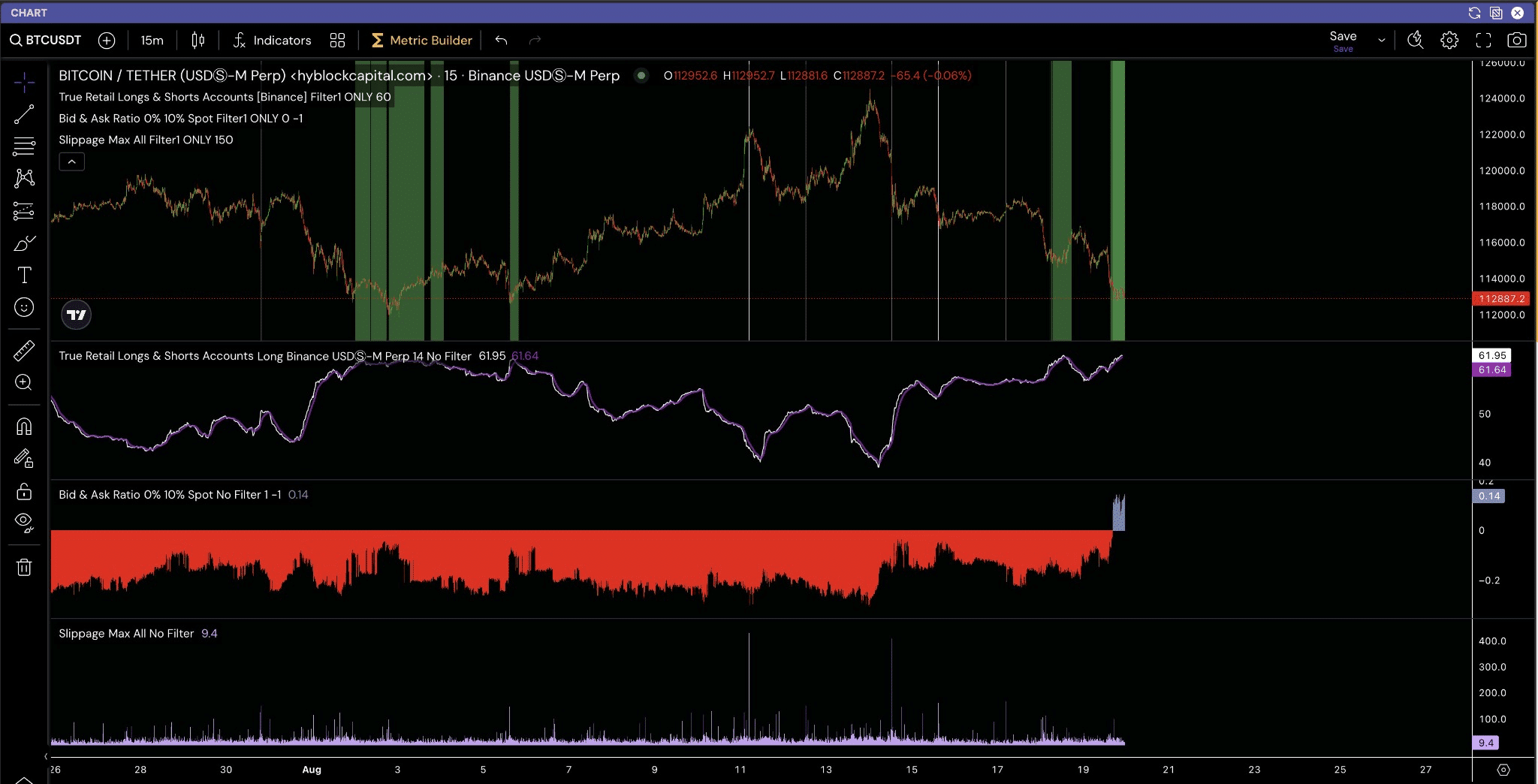Bitcoin correction is ongoing as short-term holder (STH) selling pushed STH SOPR below 1, signaling capitulation pressure and thinner bid-side liquidity; BTC may test $110k if fresh buy flow fails to arrive, making current levels a key inflection point for near-term direction.
-
STH SOPR dip below 1 shows short-term holders selling at a loss.
-
Bid-side liquidity is thin after a rejected $117k breakout and three days of net outflows.
-
Retail long concentration (61–62%) and shallow orderbook increase downside risk; a drop below $110k is possible.
Bitcoin correction: BTC STH SOPR falls under 1, signaling capitulation and thin liquidity. Read analysis and steps traders can take — stay informed with COINOTAG.
What is driving the Bitcoin correction?
Bitcoin correction is driven primarily by short-term holder selling and thinning bid-side liquidity after a failed push toward $117k. Traders who bought near the rejected high are offloading, which pushed STH SOPR below 1 and increased realized-loss selling in the tape.
How does STH SOPR signal capitulation?
STH SOPR below 1 shows that short-term holders are selling at a loss. This metric flags capitulation when sustained. In this episode, STH SOPR slid to its lowest level in over a month after a rejected $117k breakout and three straight days of net outflows.
CryptoQuant and on-chain flow data referenced by market analysts show that such a dip often coincides with thin order books and elevated retail exposure.

Source: CryptoQuant
Why did the $117k level fail and what followed?
The $117k area acted as resistance after a late push on 16 August was rejected. That rejection triggered three straight days of net outflows and a retracement toward early-August support. The bid wall that would normally absorb selling failed to hold.
Short-term holders who purchased above $117k likely sold to break even or cut losses. Early-August showed a similar pattern, where a 6% drop led to STH SOPR near 0.99 before liquidity reloaded and BTC rebounded to a new high.
How liquid is the current order book?
Order book metrics are shallow. Reported bid/ask was 0.14 and slippage measured at about 9.4 in recent snapshots. Retail long concentration sat around 61–62%, indicating that small traders remain net-long and may be susceptible to forced exits if price grinds lower.

Source: Hyblock Capital
When could BTC rebound or break down?
A rebound requires fresh buy flow and thicker bid-side liquidity. If buyers re-enter near current levels and rebuild a meaningful bid wall, BTC could retest recent highs. Conversely, weak bids and continued STH selling could open a path to $110k or lower.
Frequently Asked Questions
Is this a bear market or a short-term correction?
This appears to be a short-term correction, not a structural bear market. Key on-chain metrics show capitulation among short-term holders, but longer-term holder metrics and network fundamentals have not signaled a systemic trend change.
What should traders watch next?
Traders should watch STH SOPR, order book depth, retail positioning, and net flows. Look for sustained buy-side volume to validate a rebound. If these signals remain weak, prepare for a test below $110k.
Key Takeaways
- STH capitulation: STH SOPR <1 signals short-term holders selling at a loss, increasing near-term downside pressure.
- Thin liquidity: Low bid/ask ratio and high slippage make rallies fragile without fresh buy flow.
- Actionable insight: Monitor order-book depth and on-chain flow; set risk limits and watch $110k as a near-term support test.
Conclusion
Short-term metrics show a clear Bitcoin correction driven by STH capitulation and thin bid-side liquidity. Market participants should prioritize order-book and on-chain signals before increasing exposure. COINOTAG will continue to monitor flow and position metrics as the situation evolves; stay informed and manage risk accordingly.






